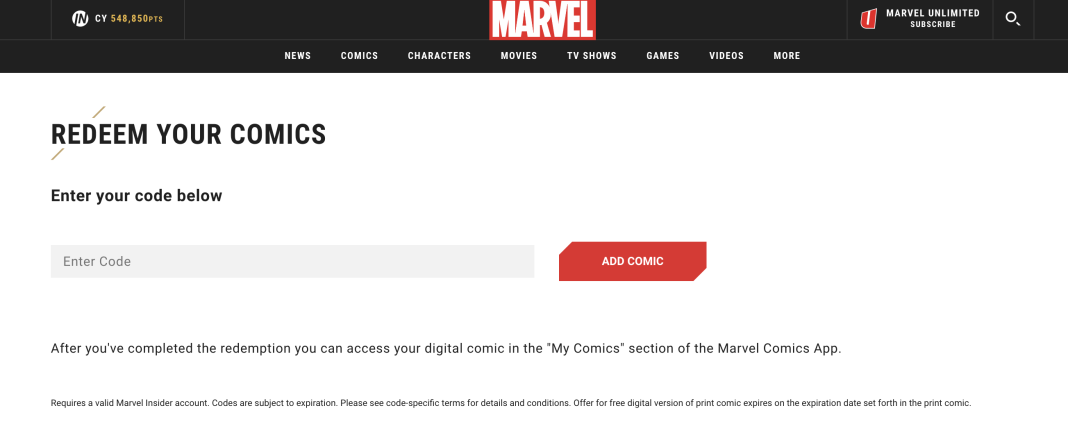A few weeks ago, Marvel announced they were shuttering their digital comics app and migrating all accounts and libraries into the Marvel Unlimited app. Along with this goes the ability to purchase digital comics outside of the controversial new Kindle reading experience… unless readers continue to utilize the digital redemption code program Marvel has been operating since 2010 (which will continue after the shutdown). For those unfamiliar, this program allows readers who buy physical copies of Marvel comics to collect digital copies of those same books, initially via a code included in each book. While the service has had its ups and downs, the codes have had an interesting run over the years, and we thought it would be worth charting the evolution of Marvel’s Digital Comics program as a whole since its inception (from the perspective of a power user).
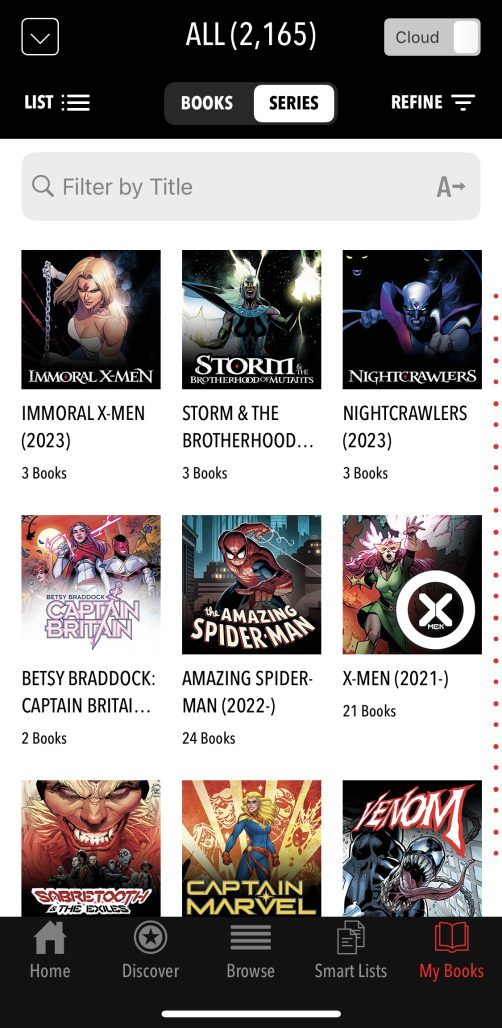
A (quick) history of Marvel’s Digital Comics
Digital comics have existed almost as long as the internet itself (between pirates and creators themselves), but let’s (briefly) talk about Marvel’s presence online. The House of Ideas has been on the web since the mid-’90s, but only dabbled in full digital comics at the beginning. Starting in 1996, Marvel explored digital comics through CyberComics or Webisodes. The AOL-based service allowed for the free download of Flash-based motion comics (some of which you can view here), and though the program only lasted until 2000, it was eventually followed by the similar DotComics in 2002. According to a Chicago Tribune article by occasional Beat contributor Todd Allen, the latter site was insanely popular for the time, amassing over 100,000 downloads following the release of that year’s Spider-Man movie.
However, each site cost quite a bit to operate, and carried (at various times) only 4-12 free downloads, ranging from popular Ultimate comics of the era to a smattering of classics (though you could always shell out the cash for CD collections of some of the most popular Marvel mags). The page was eventually replaced in 2005, as Marvel began experimenting with a new digital comics service. This would allow readers to access the entirety of their enormous back catalog, but the slow rollout meant that there were only 24 issues available on the platform by mid-2006.
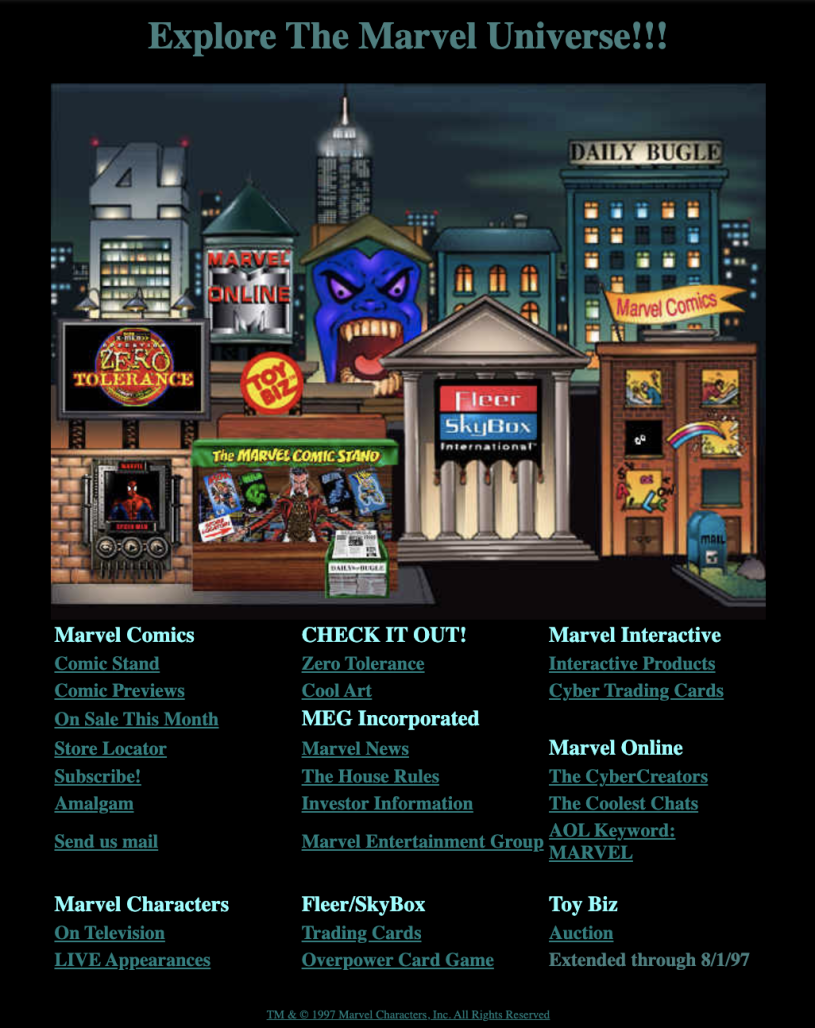
The website was able to eventually find its footing, and by November 2007, the service had relaunched to become Marvel Digital Comics Unlimited, a paid subscription service featuring 2,500 digital comics at launch (and more to be added weekly). Users were able to subscribe for $4.99 a month and read any of the digitized comics on their desktop, utilizing a ‘Smart Mode’ to zoom in on individual panels and scenes for a more optimized reading experience. New physical comics had a six month delay for release (which was eventually shortened to three months in 2021), and there was initially a 12 comic limit for personal downloads.
The service was a massive success, but there was some room to grow. Marvel didn’t begin to explore the possibility of selling mobile editions of physical comics until April 2010, when the first generation of the iPad became available. Partnering with a newish comiXology, the service made it possible to buy individual issues of a select number of series, with the ability to build a library on mobile devices (with desktop availability arriving around the same time). The popularity of the service encouraged the publisher, and day-and-date digital comics began appearing on the app in late 2010, beginning with Ultimate Thor. Users would be able to subscribe to specific series through the service, allowing for direct delivery to all devices when Wednesday mornings rolled around.
Digital Codes
The next big step was the addition of digital redemption codes (the subject of this article!) within physical comics, which started in 2011. Marvel tested the waters by including a digital code within physical copies of the first issue of Avenging Spider-Man, which readers could redeem at marvel.com/redeem. The code would be redeemable for up to a year after the issue’s release. The physical comics including these codes were initially polybagged as a way to protect the code for individual readers, but this proved to have a bit more wiggle room than the publisher expected, with some fans peeking inside the issues to take codes without an actual purchase.
Success led to another test run focusing on the entire Ultimate line, along with the eventual replacement of the polybags with a tearaway sticker to cover the codes. This also took off, and with a price increase from $2.99 to $3.99 (and a visual redesign!), all Marvel titles began carrying digital codes in the Summer of 2012. Select shrink wrapped hardcover collections followed suit, and the program became solidified for the next few years.
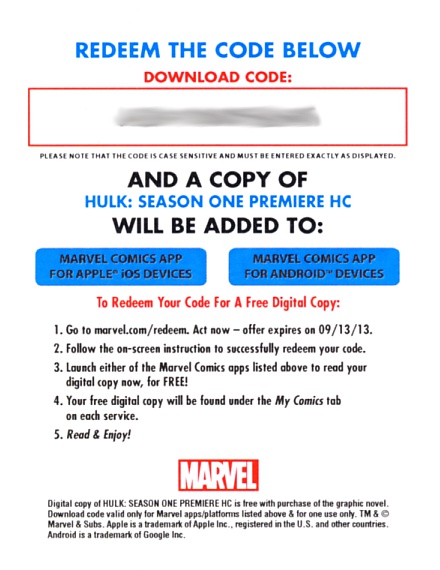
Sidenote – this is when I got into comics. As an eleven-year-old with no disposable income, these codes and a slowly growing digital library really helped me feel immersed in the Marvel Universe. The inclusion of a free section, which cycled through different issues on a semi-regular basis, made it easy to sample a wide variety of titles.
Along with this, the app frequently ran 99 cent and ‘up to 67% off’ sales, helping Marvel digital mags become a bit more affordable on a budget (and allowing more access than my local public library had at the time). Unfortunately, the economics of these sales have never been clear, and it’s hard to say how they affected both retailers and creators alike.
Special events featured codes as well, like the 2014 virtual TEDxTeen event, which gave away free download codes for All-New Marvel Now! Teen Heroes. This increased digital presence allowed for improved accessibility to comics, which in turn brought more readers to Marvel. For some, digital comics also became a way to downsize a physical collection, while still maintaining the ability to keep up with one’s favorite comics.
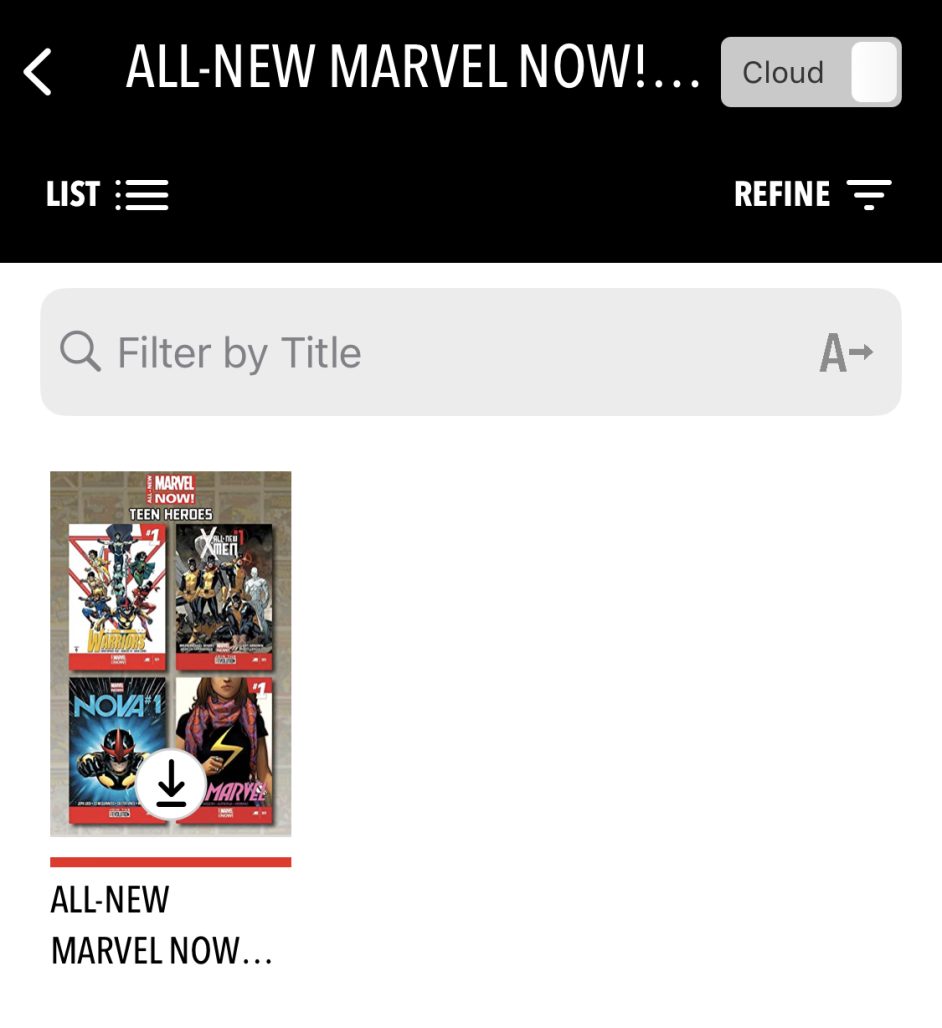
Recent Changes
Even though the digital comics landscape has greatly evolved since 2012, the digital redemption codes themselves have largely stayed the same since their introduction (though collections haven’t carried codes for years now). However, a few changes have been introduced (and walked back) over the past few years.
In January 2017, new release codes were temporarily discontinued, and replaced with broad codes offering the first issues of prominent and recent stories from Marvel history (such as Civil War II and Old Man Logan). Fans were displeased to say the least, and after a mere two months, Marvel reversed the policy, restoring new release codes, which briefly came with a free bonus comic as a sort of mea culpa. For a short time after, comics purchased during the hold could be claimed through the verification by way of customer’s receipts (though I still have gaps in my digital library I’ve never filled).
As Marvel Unlimited continued to thrive and expand, moving further into Webtoons’ scrolling comics space, the desktop digital website was given slightly less attention. Marvel’s digital comics shop was shuttered in May 2020, in the early months of the pandemic, as publishers and distributors were still determining the best course of action for new releases. The mobile app stuck around, but it became the only place outside of Amazon to legally purchase new Marvel digital releases.
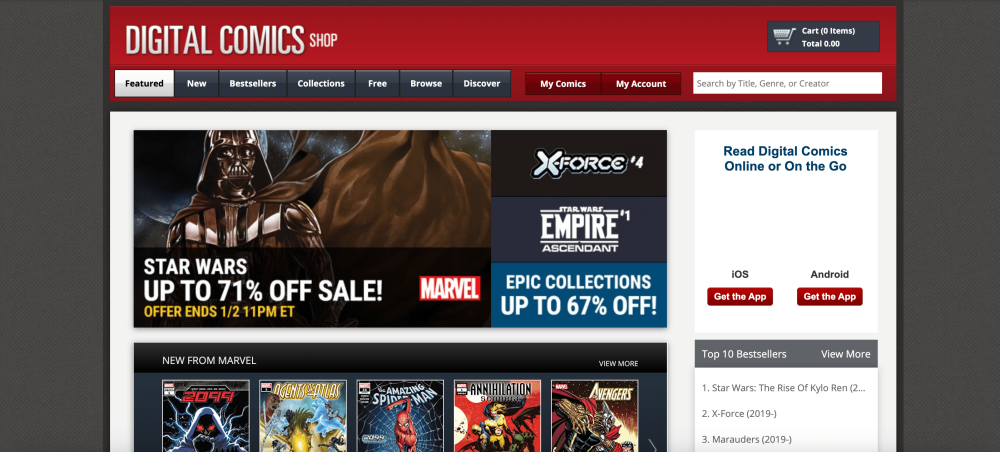
A new wrinkle arrived to digital redemption codes in December 2021, as Marvel began experimenting with new ways to get the codes to readers. Readers could still acquire digital copies of their physical books, but were required to take a picture of the cover of a given issue and send the image to marvel.com/redeemhelp within a few months to receive a digital download code. This program worked (albeit with some room for manipulation that was quickly corrected), and has stuck around, although the redemption window has shrunk along with the issues offered for redemption.
In February 2022, the main comiXology storefront was shut down and replaced with a revamped Kindle experience, leaving Marvel Unlimited as the only options to access Marvel Comics on the desktop. The move was met with dismay across the comics community, and the year since has seen a number of new initiatives to make digital comics more accessible again (albeit at an incredibly slow rate). ComiXology has also been faced with serious layoffs since, and without a clear answer, one can surmise the discontinuation of the Marvel Comics mobile app might be a direct consequence of this lack of a staff.
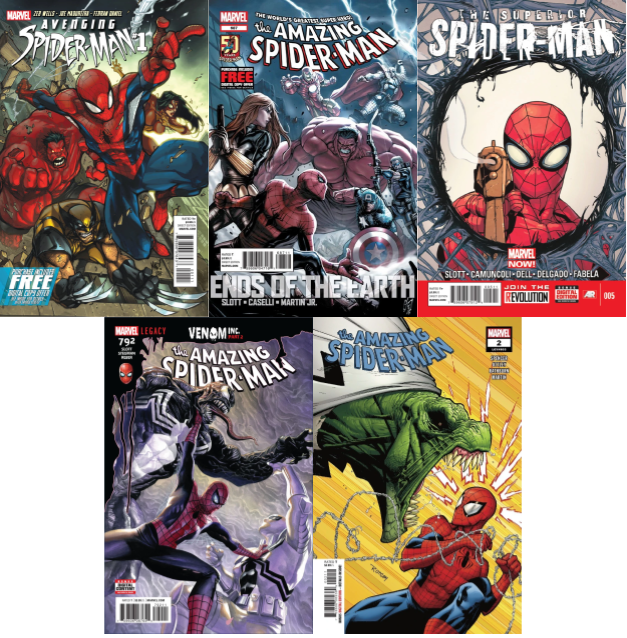
This leads us right up to the present, and the end of the Marvel Comics app. Speaking from personal experience, the app has been a huge net positive for fans and the company alike. Though frequently buggy and occasionally hard to navigate, as Heidi MacDonald, our EiC, described the comiXology service as a whole, “it was dependable and relatively easy to use.” Pivoting resources to Marvel Unlimited during the streaming age makes a heap of sense, but it’s always been advantageous to have an alternative to that subscription-based model. People who lived far from comic shops, couldn’t go to comic shops due to lack of accessibility, didn’t have the space, or relied on the weekly subscriptions utilized the service for years, and it’s hard to see such a useful resource go away. I’m thankful the digital codes are at least sticking around (along with our digital libraries), but I’m hoping that a complete digital storefront finds its way back onto our devices sooner rather than later.
Stick to the Beat for the latest news in the digital comics space!


